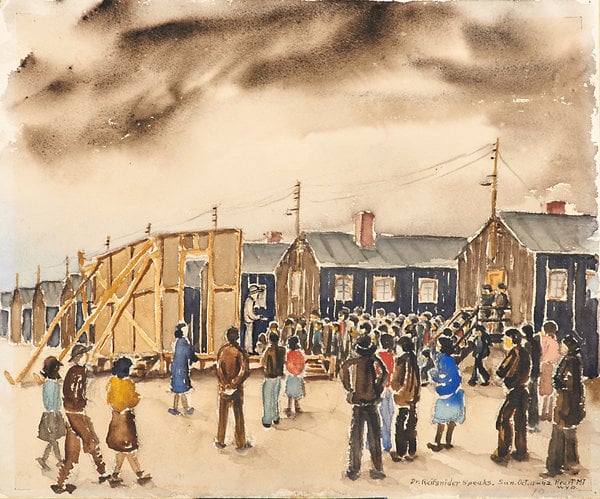Auctions
Seller of Controversial Japanese Internment Camp Artifacts Steps Forward to Defend Himself
The seller hopes to keep the collection together.

The seller hopes to keep the collection together.

Sarah Cascone

John Ryan, the formerly anonymous seller of a collection of artifacts from the internment camps that held Japanese Americans during World War II, has come forward to defend himself against accusations that the planned auction was immoral (see Auction of Internment Camp Art Sparks Widespread Outrage), reports the New York Times.
The sale was set to be held at New Jersey’s Rago Arts and Auction Center before it was cancelled last week (see Rago Cancels Controversial Auction of Artifacts From Japanese Internment Camps).
“We have tried to be good stewards of this material and protect it over the years,” Ryan told the Times. “We weren’t trying to extort money from anyone,” he said; rather, the sale was intended to help a family member in financial need.
The late crafts historian Allen Hendershott Eaton collected the internment camp artifacts while researching his 1952 book, Beauty Behind Barbed Wire: The Arts of the Japanese in Our War Relocation Camps. Ryan inherited the collection from his father, who in 1990 served as the executor of the estate of Eaton’s daughter Martha. Martha Eaton’s will was contested by some of her relatives, but a judge ultimately dismissed their claims that Thomas Ryan had taken advantage of the elderly woman, and ruled in Ryan’s favor.
While Ryan maintains that Rago had assured him the auction would attract institutional bidders, the Times reports that he turned down a $50,000 offer that nearly doubled the sale’s $27,900 high estimate. The offer was from the Heart Mountain Wyoming Foundation, which runs a center dedicated to internment camp history on the site of a former camp, but was rejected because “we didn’t feel qualified to make the decision about whether it should go there.”
Moving forward, the family will work with an advisory group that includes Star Trek actor George Takei to find an institutional home for the artifacts. “We are focused on keeping the collection together as one archive,” Ryan concluded. “But we want it to go to the place where its history will be best served.”